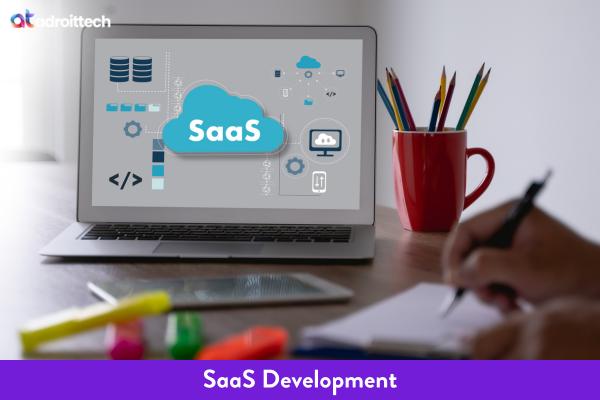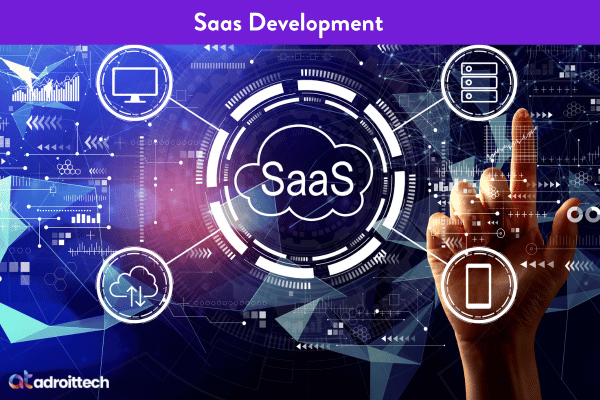SaaS Development
Leading SaaS Development Services
Premier SaaS Development
SaaS development is the process of developing software applications that are provided via the internet using a cloud-based model. These programs, known as SaaS (Software as a Service) apps, can be accessed from any internet-connected device, removing the need for local installations or software upgrades.
SaaS development has several stages, including conceptualization, design, development, testing, deployment, and maintenance. Developers strive to create scalable, dependable, and secure software that satisfies the needs of their intended audience. They frequently use agile approaches to iteratively develop and enhance software depending on user feedback.
SaaS development often has the following key attributes:
Cloud-based: SaaS applications are present on remote servers managed by the provider, freeing users from managing their own infrastructure.
Reduced costs: SaaS eliminates the upfront costs of buying and maintaining software licenses and hardware.
Subscription-based: SaaS applications are typically accessed through a subscription model, where users pay a monthly fee for access to the features and functionalities.
Scalability: SaaS applications are designed to be scalable, meaning they can easily accommodate a growing user base without significant changes to the infrastructure.
Automatic updates: The SaaS service provider is responsible for maintaining and updating the software, ensuring users always have access to the latest version.

A well-designed SaaS application UI should prioritize usability and aesthetics in order to create a seamless and efficient user experience. The first and foremost emphasis should be on an intuitive user experience, with a clear and consistent navigation, minimalist design for decluttering, simple and clear wording, and a responsive design. We also make sure to remain consistent with branding and accessibility by following WCAG recommendations.
Cloud migration in SaaS development is the process of migrating a software application, infrastructure, or data from traditional on-premises servers or traditional hosting settings to cloud-based infrastructure and services. This move enables SaaS organizations to leverage the advantages of cloud computing, such as scalability, flexibility, cost-effectiveness, enhanced security, and easier maintenance and updates.
SaaS applications need to be able to handle increasing demands without compromising performance. This is crucial for SaaS businesses because they inherently aim to grow their user base and the amount of data they handle. Vertical Scaling involves adding more resources to a single server, like boosting its processing power (CPU), memory (RAM), or storage capacity. Horizontal Scaling involves adding more servers to distribute the workload. Scalability is an essential trait for SaaS applications because it accommodates growth, improves performance, reduces cost and enhances reliability.
Integration And Scalability
Software that feels magical

The choice of tech stack for SaaS development is determined by a variety of factors, including the application’s specific requirements, the development team’s experience, scalability demands, and financial limitations.
JavaScript and Node.js are popular backend programming languages for their asynchronous and event-driven architecture, making them suitable for real-time applications, while Python, known for its simplicity and readability, is often used for data-heavy applications.
For scalable infrastructure, we go for popular cloud computing platforms, such as AWS, MS Azure, GCP and SAP BTP, Docker for containerization, and Kubernetes for orchestration.
Employing a DevOps strategy is of the utmost importance in SaaS Development. This is where we use CI/CD tools for automated development and deployment. Some common tools we bring into action include Jenkins for automated building and testing, Prometheus and Grafana for monitoring the SaaS application’s performance and logs, and Identity Access Management (IAM) for restricted access to resources and data.
Functionality
ERP software can be tailored to specific industries. These industry-specific versions come ready-made with features that fit the way that particular business sector works. For instance, a manufacturer would get an ERP system with tools for scheduling production runs, keeping track of factory activity, and ensuring quality control. On the other hand, an ERP system designed for healthcare would focus on managing patients, keeping electronic health records, and following regulations.
Customization
ERP software can be tailored to specific industries. These industry-specific versions come ready-made with features that fit the way that particular business sector works. For instance, a manufacturer would get an ERP system with tools for scheduling production runs, keeping track of factory activity, and ensuring quality control. On the other hand, an ERP system designed for healthcare would focus on managing patients, keeping electronic health records, and following regulations.
Reporting and Analytics
ERP solutions often provide industry-specific reporting and analytics features. They may feature industry-specific KPIs (Key Performance Indicators) and dashboards that provide insights into performance and trends related to that industry.
Testing
Vigorously test the developed software to identify and fix bugs or defects using unit testing, integration testing, user-acceptance testing, and system testing to ensure the software meets quality standards.
Introducing AI for advanced functionality
There are several ways to add AI capabilities to ERP software, and the specific approach will depend on the functionalities businesses want to achieve and the resources available.
Predictive Analytics: AI can evaluate previous data to forecast future patterns such as demand or equipment breakdown.
Intelligent Automation: AI-powered bots to handle repetitive tasks such as data entry, invoice processing, and customer support inquiries.
Natural Language Processing (NLP): ERP systems can be made more user-friendly by allowing interaction through voice commands or written questions via NLP.
Adding Blockchain to ERP systems
Integrating blockchain technology into ERP software can provide several benefits such as enhanced security, transparency, immutability, and decentralized data management.
Why Choose Adroit Tech ?
Technical Expertise
At Adroit Tech, our team comprises exceptionally talented professionals proficient in diverse technologies and domains. This includes Full Stack developers adept in both frontend and backend development, Python developers making use of cutting-edge AI and ML algorithms for data-driven solutions, as well as web and mobile app developers dedicated to crafting captivating and user-friendly digital experiences. Moreover, our team is well-versed in employing leading cloud computing platforms such as AWS, GCP, Microsoft Azure, and SAP BTP, enabling us to develop and sustain applications with a focus on scalability, reliability, and security.
Agile Development
We utilize agile development methodologies for iterative development cycles with continuous feedback and adaptation.
Scalability and Maintainability
We design your applications with scalability in mind, so it can handle a growing user base without performance issues, and also keep a well-written, documented code for future maintenance and updates.
FAQs
SaaS utilizes the internet to provide subscription software services that are maintained by a third-party vendor. Dropbox, Google Workspace, and Salesforce are some well-known examples of SaaS.
No-code and low-code are two distinct techniques to developing SaaS applications. No-code platforms enable users to develop applications without writing any code. They typically include drag-and-drop tools, prebuilt components, and visual workflows that allow non-technical and technical developers to create and build apps fast. Low-code platforms are slightly more advanced. They contain simple features and operations that do not require coding to implement, but coding experience is required to customize the application’s complex features and operations. Teal is a SaaS application that was built with an entirely no-code tech stack. It is a tool that helps streamline the job search process for its users.